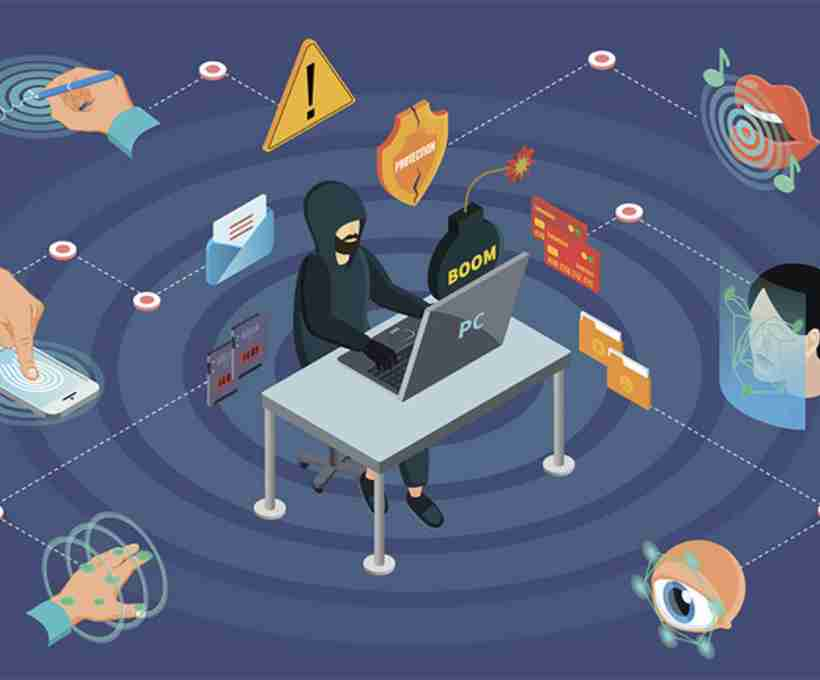In today’s fast-paced digital world, our lives revolve around the internet. From sending a simple “Hello” message to making massive business transactions, everything travels through the web in the form of data. But have you ever wondered if someone else might be watching this data? That’s where the concept of sniffing comes into play — and no, we’re not talking about dogs sniffing out your trail.
Welcome to the world of network sniffing — a practice that can be used for both good and bad. In this blog, we’ll break down what sniffing is, how it works, types of sniffing, real-life scenarios, and how you can protect yourself from falling victim to this cyber trickery.
What is Sniffing?
In the world of cybersecurity and networking, sniffing refers to the process of monitoring and capturing data packets as they travel through a network. These packets contain everything from the websites you visit to your login credentials and even your bank details.
Think of it like someone standing on a street corner, secretly listening to the conversations of people passing by. In the digital world, that “street corner” is your internet connection, and the “eavesdropper” is a sniffer.
How Does Sniffing Work?
To understand sniffing, let’s first understand how data moves online. Whenever you send a message or access a website, the information is broken down into tiny packets and sent over the network. These packets travel from your device to the server and back. Now, sniffing tools intercept these packets while they are in transit.
If the data isn’t encrypted, the sniffer can read every bit of information in plain text — from your email to your password.
There are two main methods used in sniffing:
- Passive Sniffing
This is the “silent observer” method. The attacker just listens in on the network traffic without interfering or modifying any data. It usually works in networks that use hubs, where every data packet is broadcasted to all connected devices. - Active Sniffing
This is a more aggressive form. Here, the attacker injects fake traffic to manipulate the network behavior — like ARP spoofing or MAC flooding — to reroute data through their device and capture it.
Tools Used in Sniffing (For Ethical and Unethical Purposes)
Just like any tool, sniffers can be used by the good guys and the bad guys. Here are some tools commonly used:
- Wireshark: One of the most popular packet analyzers. It’s used for ethical purposes like network troubleshooting and analysis.
- Tcpdump: A command-line tool used by pros to monitor network traffic in real-time.
- Ettercap: A powerful tool for active sniffing and man-in-the-middle attacks.
- Cain & Abel: Commonly used for sniffing passwords in local networks.
While these tools are legal, using them without permission is illegal and unethical.
Types of Sniffing Attacks
Here’s how sniffers attack networks:
ARP Spoofing
The attacker sends fake ARP messages on the LAN, linking their MAC address to the IP of another device (usually the gateway). This tricks the system into sending data to the attacker instead of the actual destination.
DNS Spoofing
The attacker alters DNS responses to redirect traffic to malicious websites. You think you’re logging into your bank? Nope, you’re handing your info to a scammer.
MAC Flooding
The attacker overwhelms a switch with fake MAC addresses. The switch, in confusion, sends all data to every port — making it easy for the attacker to capture traffic.
Real-Life Examples of Sniffing
Let’s not just talk theory. Here are real-world examples that show the dangers of sniffing:
Hotel Wi-Fi Sniffing
Hackers often target hotel Wi-Fi networks because they are typically unsecured. Once connected, a sniffer can capture sensitive data like credit card numbers or email logins from other guests on the same network.
Public Wi-Fi “Evil Twin”
Attackers set up fake Wi-Fi hotspots named “Starbucks Free Wi-Fi” or “Airport_WiFi”. Once you connect, they can monitor everything you do online.
Internal Threats
Disgruntled employees or malicious insiders in a company can use sniffing tools to monitor internal traffic, steal trade secrets, or sabotage operations.
How to Protect Yourself From Sniffing
The good news? You don’t have to be a cybersecurity expert to stay safe. Here are some practical steps you can take:
1. Use HTTPS Websites Only
Always make sure the websites you visit use HTTPS (not just HTTP). The “S” stands for secure, and it means your data is encrypted.
2. VPN (Virtual Private Network)
A VPN creates an encrypted tunnel between your device and the internet. Even if someone sniffs your traffic, they won’t be able to decipher it.
3. Avoid Public Wi-Fi for Sensitive Tasks
Do not access your bank, email, or any sensitive information on public Wi-Fi. If you must, use a VPN.
4. Regular Software Updates
Hackers often exploit outdated software. Keep your OS, browsers, and antivirus software updated to patch known vulnerabilities.
5. Use Strong and Unique Passwords
And don’t reuse passwords! Use a password manager if needed.
6. Enable Two-Factor Authentication (2FA)
Even if your password is captured, 2FA adds another layer of protection.
When Sniffing is Legal (and Helpful)
Let’s be clear — not all sniffing is bad. In fact, system admins and cybersecurity professionals use sniffing tools every day to:
- Detect unauthorized access
- Monitor bandwidth usage
- Troubleshoot network problems
- Analyze traffic patterns
- Ensure security compliance
This is known as ethical sniffing or network monitoring, and it’s crucial for maintaining healthy and secure networks.
Is Sniffing Illegal?
Yes and No.
✅ Legal: If you own the network or have permission to monitor it, sniffing is completely legal and often necessary.
❌ Illegal: Intercepting data on a network without permission is a violation of privacy laws in almost every country. This includes sniffing on public Wi-Fi, corporate networks, or someone else’s home internet.
Final Thoughts
Sniffing is a double-edged sword. When used ethically, it helps protect and optimize networks. But in the wrong hands, it becomes a powerful weapon capable of stealing identities, financial data, and confidential business information.
The best way to stay safe? Stay informed, be cautious, and implement the security practices outlined above. The internet is a fantastic place, but like any neighborhood, you need to know how to avoid the dark alleys.





